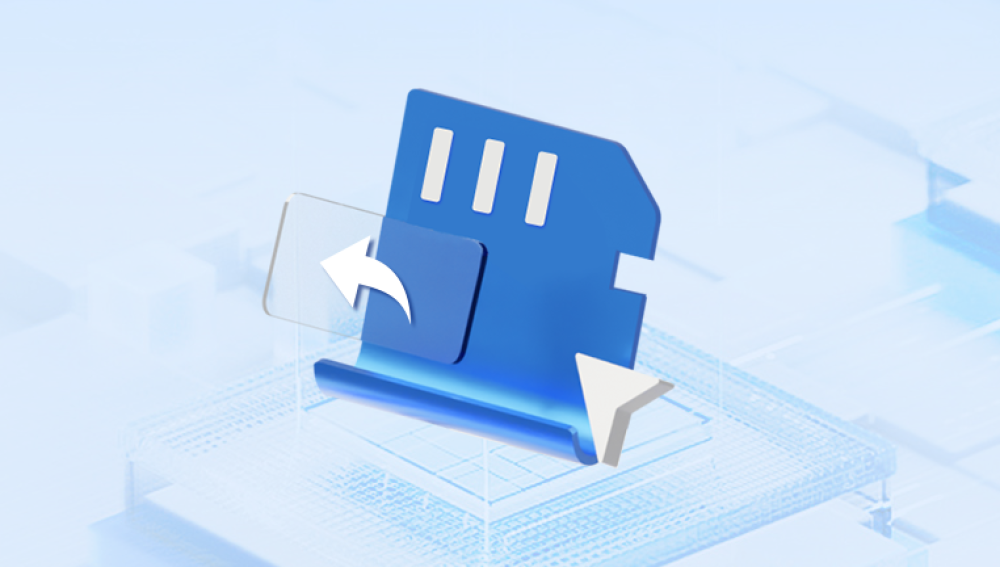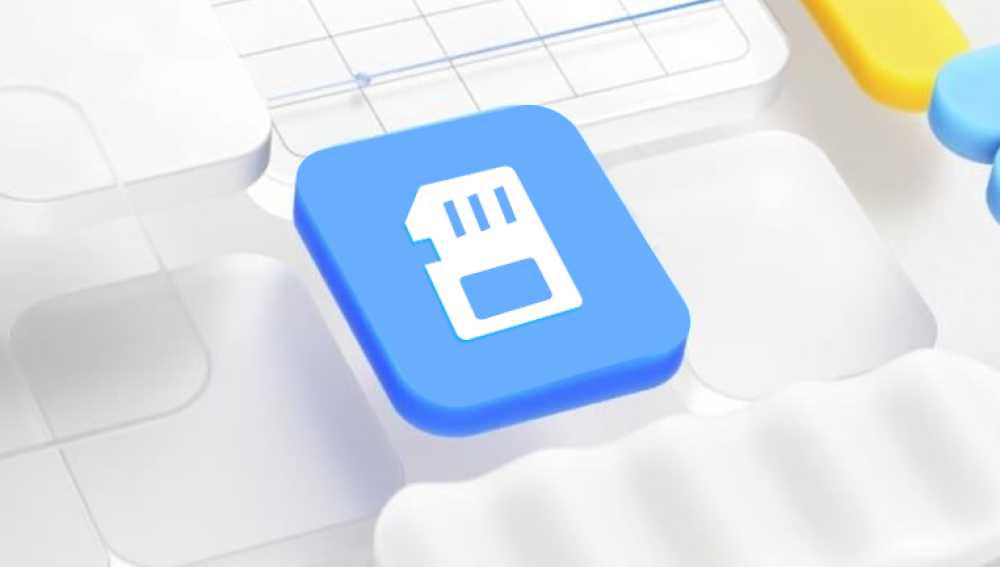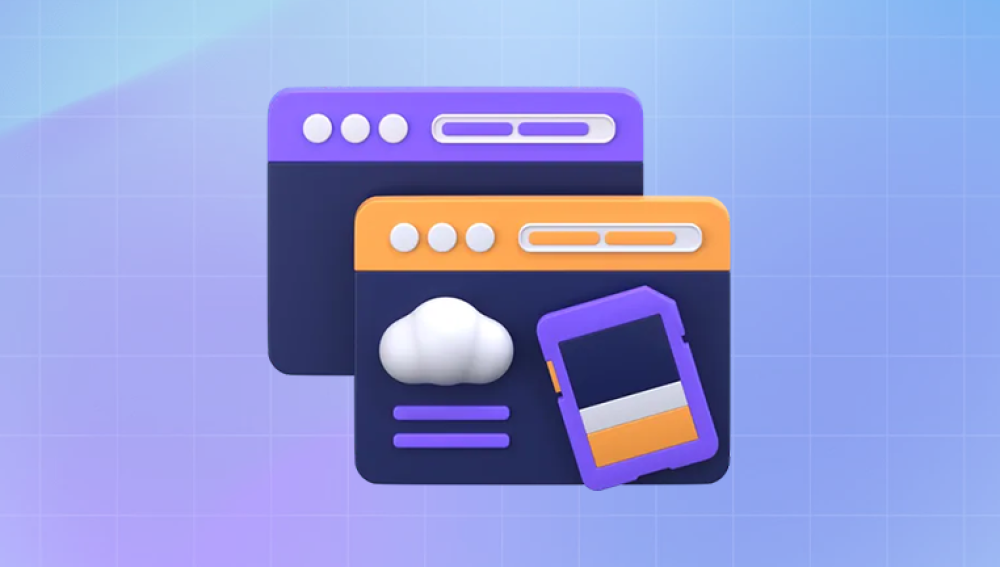Before diving into the recovery process, it's important to understand how memory cards work and why data loss happens in the first place. Memory cards, such as SD (Secure Digital) cards, microSD cards, and CF (CompactFlash) cards, are commonly used for storing data in devices like digital cameras, smartphones, and drones. These cards use flash memory technology to store files, including photos, videos, and documents.
When you delete a photo from a memory card, the file is not immediately erased from the card’s physical memory. Instead, the data is marked as “free space,” which means the operating system recognizes it as available for new data to overwrite. This is why recovery is often possible until new data overwrites the deleted files, they remain on the card, and specialized recovery software can retrieve them.
Data loss can happen for various reasons:
Accidental deletion: Whether it's a simple slip of the finger or an unintended click, it's easy to accidentally delete a file.
Card corruption: Memory cards can become corrupted due to improper ejection, power loss during writing, or physical damage.
File system issues: A damaged or corrupt file system can make files inaccessible, even though they are still physically present on the card.
Format errors: Sometimes, users mistakenly format their memory cards, wiping all data in the process.
Regardless of the cause, it's essential to act quickly if you need to recover deleted photos. The more you use the card after deletion, the higher the chances of overwriting the deleted data.

Step 1: Stop Using the Memory Card
The first and most crucial step in recovering deleted photos is to stop using the memory card immediately. As mentioned, when a file is deleted, it’s marked as available space, and new data can overwrite it. The more data that is written to the card, the less likely it is that you can recover your deleted files.
If possible, remove the memory card from the device, whether it's a camera, smartphone, or computer, and store it in a safe place until you're ready to begin the recovery process.
Step 2: Choose the Right Recovery Tool
Drecov Data Recovery is a robust software solution designed to help users recover lost or deleted data from a variety of storage devices. Whether you've accidentally deleted files, formatted a storage drive, or encountered a system crash, Drecov Data Recovery provides an effective tool to retrieve photos, documents, videos, and other essential files. Developed by Panda Security, a well-known name in the cybersecurity industry, this data recovery tool combines advanced technology with a user-friendly interface to deliver reliable results.
User-Friendly Interface: Drecov Data Recovery is designed for ease of use, making it suitable for both beginners and experienced users. The software’s intuitive interface guides you through the data recovery process, with clear instructions and simple options that allow even those with minimal technical knowledge to successfully recover lost files.
Support for Multiple File Types: Drecov Data Recovery can retrieve a wide range of file formats, including photos, videos, music, documents, archives, and more. This versatility means that whether you're a photographer trying to recover lost images, or a business professional needing to retrieve important documents, Drecov Data Recovery can handle a variety of recovery needs.
Quick and Deep Scans: The software provides two types of scanning modes: a quick scan and a deep scan. The quick scan is designed for faster recovery when the file loss is recent and the data hasn’t been overwritten. The deep scan mode, on the other hand, is more thorough and can detect files that are deeply hidden or have been partially overwritten, which is useful in more complex recovery scenarios.
Preview Function: Before committing to the recovery process, Drecov Data Recovery allows users to preview the files it has found. This feature is particularly helpful when you need to check the integrity of recovered images, documents, or videos to ensure they are not corrupted before restoring them.
Recovery from Various Devices: Drecov Data Recovery is compatible with a wide range of storage devices, including internal and external hard drives, USB flash drives, SD cards, and even damaged or corrupted partitions. This makes it an ideal solution for data recovery from a variety of sources, whether you’re dealing with a personal laptop, a camera’s SD card, or an external USB drive.
Recovery from Formatted Drives: One of the standout features of Drecov Data Recovery is its ability to recover data from formatted drives. If you’ve accidentally formatted a storage device, Panda can scan the drive for remnants of files and recover data even from seemingly “empty” or “unallocated” space.
Cross-Platform Compatibility: Drecov Data Recovery is available for both Windows and Mac, making it a versatile tool for users across different operating systems. This cross-platform support ensures that regardless of whether you’re using a PC or a Mac, you can rely on Panda to help with data recovery.
Free Trial and Paid Version: Drecov Data Recovery offers a free trial that allows users to scan and preview recoverable files. The free version provides limited functionality, as users must upgrade to the paid version in order to restore the files. This trial gives users the chance to evaluate the software and see if it meets their recovery needs before making a purchase.
Step 3: Install the Recovery Software
After selecting the appropriate recovery tool, the next step is to install it on your computer. Follow the installation instructions provided by the software manufacturer. Make sure to install it on a different drive or partition than the memory card you want to recover from. Installing the software on the same drive or card can result in overwriting the very data you're trying to recover.
For instance, if you're recovering photos from a microSD card, make sure the recovery software is installed on your computer's internal hard drive (not on the microSD card).
Step 4: Connect the Memory Card to Your Computer
Next, insert the memory card into a card reader and connect it to your computer. Most recovery tools will allow you to scan the memory card directly if it’s properly connected.
If you're using a camera or smartphone, you may need to connect it to your computer via a USB cable. Ensure that the device is in the correct mode for file transfer (e.g., mass storage or MTP mode).
Step 5: Scan the Memory Card for Deleted Photos
Now, launch the recovery software and begin scanning your memory card for deleted photos. Most programs will provide you with a simple interface where you can select the drive (your memory card) and initiate the scan.
During the scanning process, the software will look for traces of deleted files, even if they are not visible in the file explorer. Some programs will also offer different scanning modes, such as quick scan and deep scan. While quick scans are faster, deep scans tend to find more data by searching for deleted files that have been partially overwritten.
Keep in mind that scanning a memory card can take anywhere from a few minutes to several hours, depending on the size of the card and the amount of data stored on it. Patience is key during this stage.
Step 6: Preview and Select the Photos to Recover
Once the scan is complete, the software will present you with a list of recoverable files. Many recovery programs allow you to preview the files before recovery, which is particularly useful for confirming that the photos you're trying to recover are intact.
Look for the photos that you want to recover. They will usually be displayed in folders, and you can sort them by file type, size, or date.
Select the photos you want to recover, and avoid selecting any other files that you don't need. The more selective you are, the faster the recovery process will be.
Step 7: Recover the Deleted Photos
After selecting the photos, click the "Recover" button. You will be asked to specify a location to save the recovered files. Do not save the recovered photos back onto the memory card. Saving files to the same card could overwrite the very data you're trying to recover.
Instead, choose a safe location on your computer's hard drive or an external storage device. Once you've selected the destination, the recovery software will begin the process of restoring the photos to their new location.
Step 8: Verify the Recovered Photos
Once the recovery is complete, navigate to the location where you saved the files and check to ensure the photos are intact. Open a few photos to confirm they are not corrupted. If the photos look fine, congratulations! You have successfully recovered your deleted photos from the memory card.
If the photos appear blurry, pixelated, or damaged, try running another deep scan or use a different recovery tool. Some files might be partially overwritten, making them difficult to restore.
Step 9: Prevent Future Data Loss
Now that you've recovered your photos, it's a good idea to implement strategies to avoid future data loss. Here are some preventive measures to keep your data safe:
Create backups: Regularly back up your photos and other important files to an external hard drive, cloud storage, or both.
Use a write-protection switch: Many SD cards come with a physical write-protection switch. When enabled, this prevents accidental data loss by making the card read-only.
Safely eject memory cards: Always eject your memory card safely to avoid corruption.
Use a reliable card reader: A good-quality card reader ensures a stable connection and reduces the chances of data corruption.
Format your card correctly: Always format your card in the device you're using it with, rather than using a computer or third-party device.




